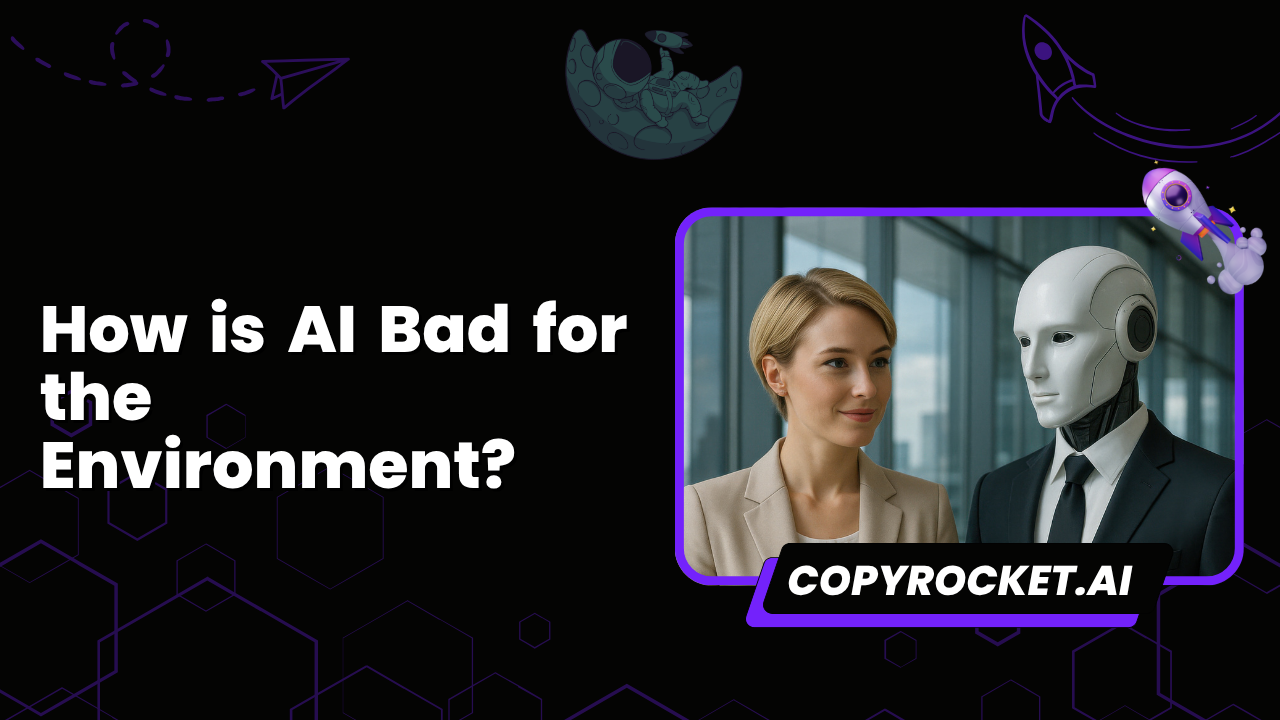Artificial intelligence (AI) is frequently celebrated for its ability to revolutionize industries and solve complex global challenges. Yet, beneath its advantages lies a substantial environmental cost that cannot be ignored.
AI's development and deployment have created remarkable progress, but their environmental impacts—including soaring energy demands, water usage, and electronic waste—pose significant risks.
While efforts are underway to minimize these impacts, understanding both the problems and the potential solutions is crucial.
Key Takeaways
- AI models, especially large ones, consume vast amounts of energy, contributing significantly to greenhouse gas emissions.
- Data centers powering AI require immense water resources for cooling, creating further environmental strain.
- Mass production of AI hardware leads to depletion of rare minerals and generates hazardous electronic waste.
- Social and environmental injustices arise as the impacts of AI disproportionately affect vulnerable communities.
- Solutions include developing energy-efficient AI algorithms, recycling hardware, and transitioning data centers to renewable energy sources.
The Environmental Costs of AI
Energy Consumption and Greenhouse Gas Emissions

AI systems rely on extensive computational processes, both during training and deployment phases. These processes require massive amounts of electricity, which, depending on the energy source, can lead to substantial greenhouse gas emissions.
Training Large Models
Training an advanced AI model like GPT-4 involves enormous energy consumption.
Studies estimate that training some models requires the equivalent energy of several hundred thousand homes annually.
Training GPT-3, for example, emitted approximately 500 metric tons of CO₂, comparable to 610 transatlantic flights (source).
Ongoing Operational Demand
Beyond training, running AI models (inference) for millions of users every day remains energy-intensive.
A single query to ChatGPT, for instance, uses around 4.32 grams of CO₂. While this seems minimal individually, the cumulative impact of millions of daily interactions becomes immense (source).
Solutions to Reduce Energy Use
- Advancements in energy-efficient AI hardware, such as specialized AI processors, reduce energy consumption per task.
- Companies like Google and Microsoft are transitioning data centers to carbon-neutral or carbon-negative operations (source).
- Researchers focus on alternative AI architectures, such as sparsely activated models, which require less energy.
Water Usage for Data Center Maintenance
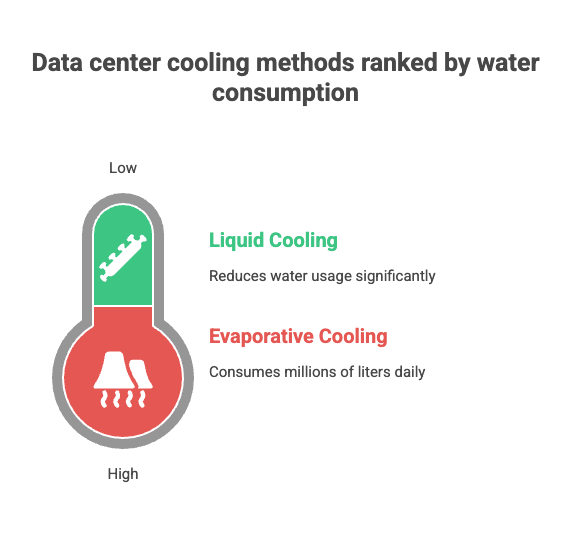
Cooling servers in data centers is an essential yet resource-demanding component of AI systems. Most data centers employ evaporative cooling systems requiring vast water resources.
Water Use Metrics
A typical data center consumes millions of liters of water daily. OpenAI’s GPT-3 training likely evaporated around 700,000 liters of clean water. Multiply this by numerous models globally, and the strain on water supplies becomes clear (source).
Regional Water Stress
Many data centers are located in arid regions like the southwestern United States, exacerbating existing water scarcity challenges (source).
Solutions to Reduce Water Footprint
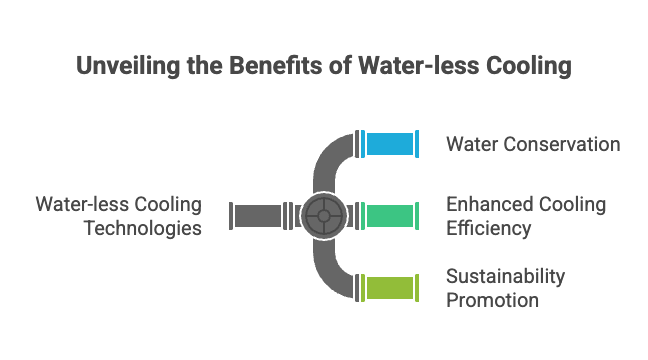
Transitioning to water-less cooling technologies, such as liquid cooling systems, can slash water usage by up to 40% (source).
Electronic Waste (E-Waste) and Material Extraction
Developing AI requires specialized hardware containing rare earth minerals. The high turnover of AI chips and servers results in rising quantities of e-waste.
Rare Mineral Extraction

Materials like gallium, neodymium, and germanium are crucial for manufacturing AI hardware. However, mining these minerals results in environmental damages such as soil erosion and water pollution (source).
Fast Hardware Obsolescence
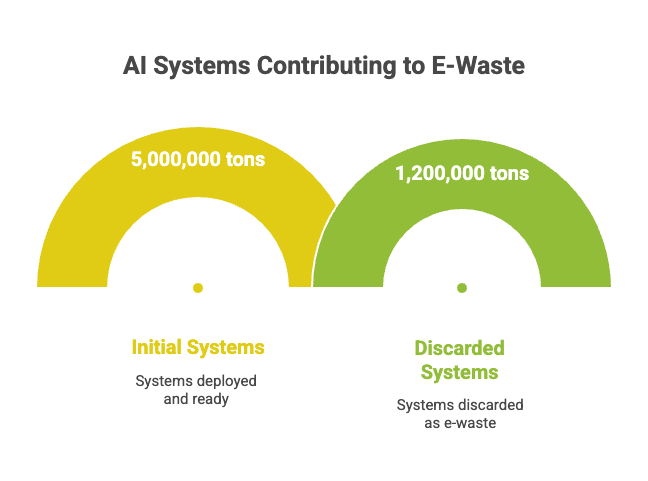
AI-driven upgrades lead to discarded systems every 2–5 years, contributing to the global e-waste crisis. Generative AI alone is projected to contribute between 1.2 and 5 million tons of e-waste by 2030 (source).
Mitigating E-Waste
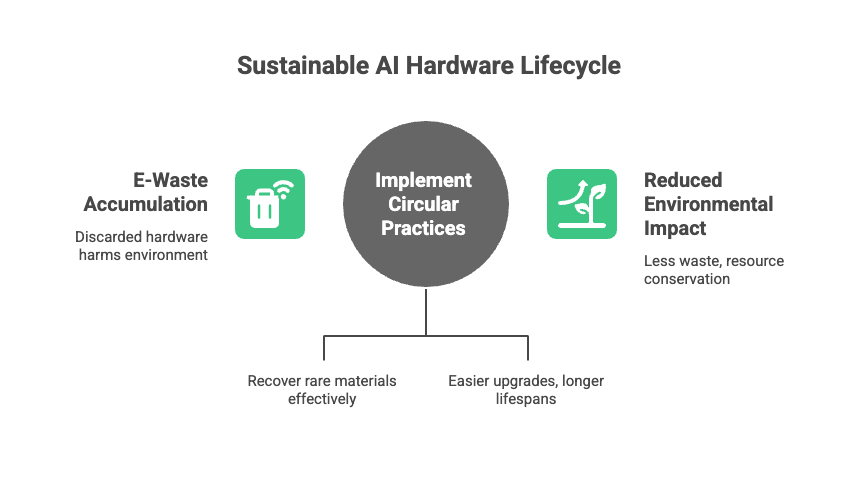
- Recycling programs for AI hardware have gained traction, recovering rare materials and curbing waste.
- Hardware designs focusing on modularity could prolong server lifespans by allowing easier upgrades instead of replacements.
Social and Environmental Justice
The environmental burdens of AI disproportionately affect economically disadvantaged communities.
Community Impacts
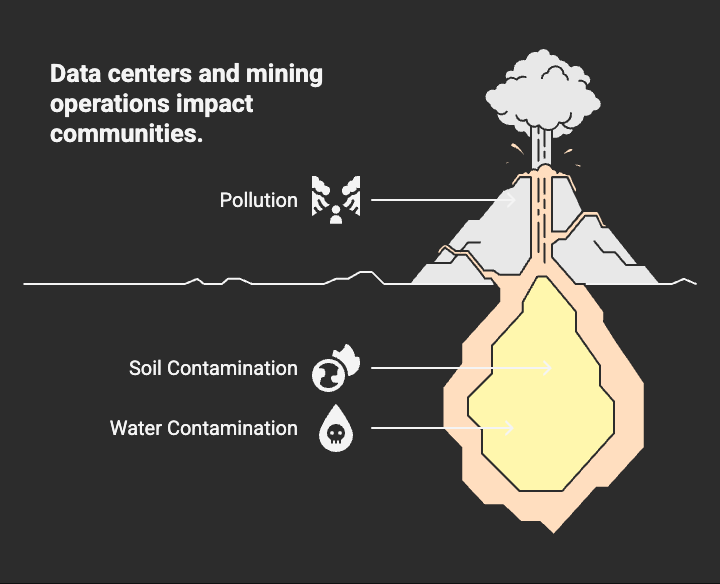
Noise and air pollution from data centers deteriorate the quality of life for nearby residents. Communities near mining operations for rare earth elements face soil and water contamination (source).
Global Inequality
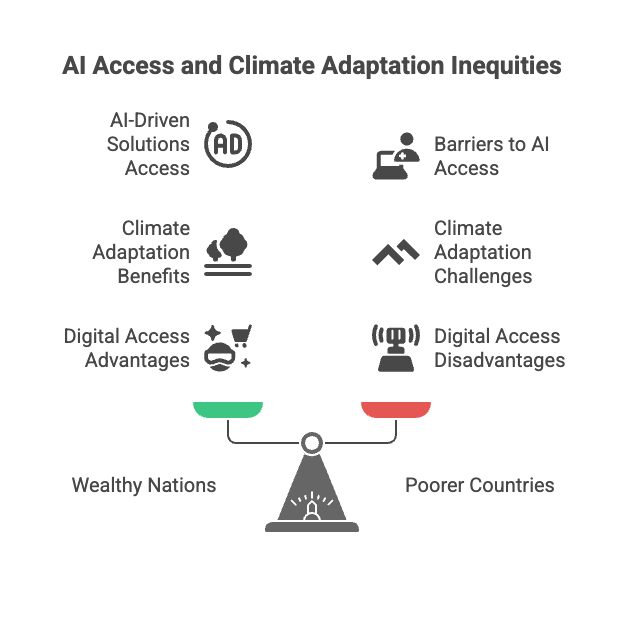
AI systems often benefit wealthy nations, while poorer countries face barriers accessing AI-driven solutions. This imbalance widens inequities in climate adaptation and digital access (source).
Solutions for Fairer Practices
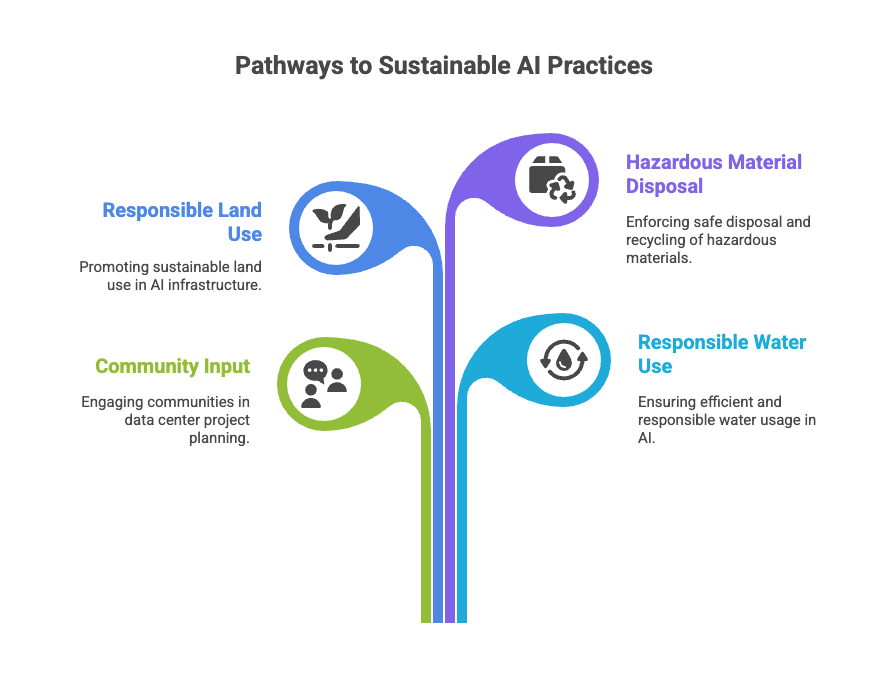
- Promoting community input in new data center projects can ensure responsible water and land use.
- Policies must enforce proper disposal and recycling of hazardous materials.
Efforts to Build Sustainable AI
While the environmental impacts are concerning, global efforts are underway to make AI more sustainable. Notable industry approaches include:
- Adopting renewable energy for powering data centers (source).
- Enhancing AI model efficiency to reduce computational demands.
- Collaborating across industries to develop circular economies for AI hardware (source).
Arguments in Favor of AI’s Environmental Impact
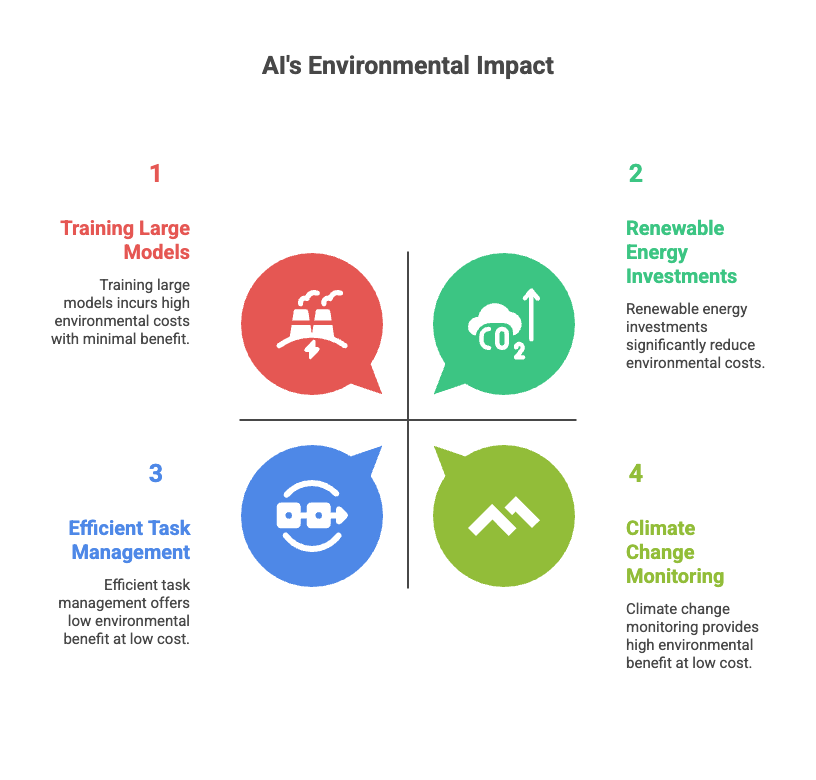
- AI can optimize power grids, reduce waste, and help scientists monitor climate change. These positive uses can offset some emissions and resource use.
- Compared to some human activities, AI can be more efficient for specific tasks (like generating reports or managing traffic).
- Major AI firms are investing in renewable energy and seeking carbon-neutral or carbon-negative operations. Microsoft ESG
Current and Future Solutions
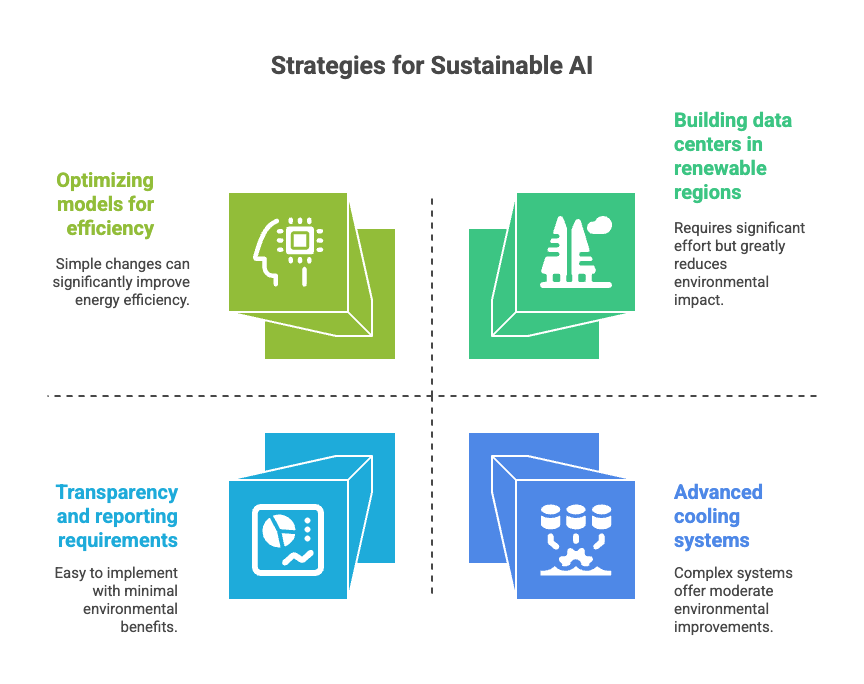
- Optimizing models to require less computation and energy, such as pruning, quantization, and using smaller models when possible. Greenly Earth
- Building data centers in regions with renewable power and lower water stress.
- Switching to advanced cooling systems that recycle water or use outside air instead of evaporation.
- Designing more energy-efficient chips and servers, and adopting circular economy principles like hardware reuse and recycling. TechInsights
- Transparency and reporting requirements: New regulations in the US and Europe require companies to disclose energy, water, and emissions data linked to AI projects. European Union AI Act
Frequently Asked Questions (FAQs)
How does AI contribute to carbon emissions?
AI consumes energy at every stage, especially during model training and inference. High energy use in fossil-fuel-dominated grids contributes significantly to carbon emissions.
Why does AI use so much water?
Server cooling requires significant water. Traditional methods like evaporative cooling rely on clean freshwater resources, creating environmental strain.
What are companies doing to reduce AI's footprint?
Tech firms like Microsoft and Google are focusing on energy-efficient hardware, adopting renewable energy, and implementing recycling initiatives.
Can AI be environmentally sustainable?
AI can become sustainable if efficiency innovations keep pace with demand growth and operational practices transition to renewable power and materials.
Final Thoughts
AI holds tremendous potential to address pressing global challenges, from climate change to healthcare advancements.
However, its environmental impact—spanning energy use, water reliance, and resource extraction—cannot be overlooked.
To ensure long-term sustainability, businesses, researchers, and governments must prioritize eco-friendly innovations while mitigating adverse effects.
By fostering a balance between innovation and conservation, AI has a chance to transform industries responsibly.
The future of AI depends not just on technological advancement but also on ethical and sustainable practices that preserve the planet for future generations.


